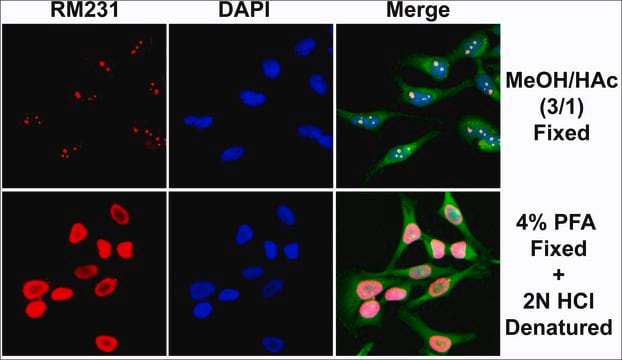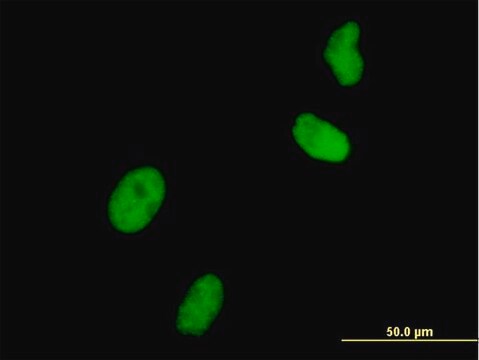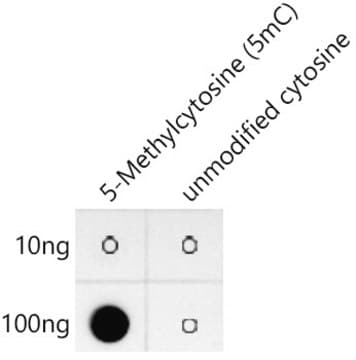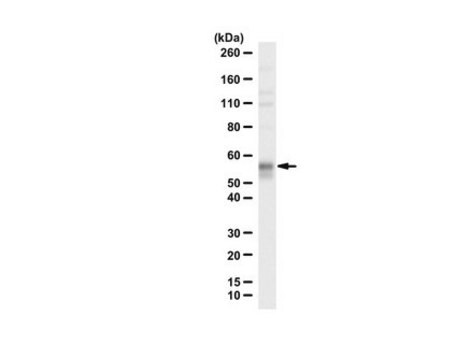MABE146
Anti-5-methylcytosine Antibody, clone 33D3
clone 33D3, from mouse
Synonym(s):
methylcytosine, methylcytidine
About This Item
Recommended Products
biological source
mouse
Quality Level
antibody form
purified immunoglobulin
antibody product type
primary antibodies
clone
33D3, monoclonal
species reactivity
human, mouse
technique(s)
Southern blotting: suitable
dot blot: suitable
flow cytometry: suitable
immunofluorescence: suitable
immunohistochemistry: suitable (paraffin)
methylated DNA immunoprecipitation (MeDIP): suitable
isotype
IgG1λ
shipped in
wet ice
target post-translational modification
unmodified
Related Categories
General description
Specificity
Immunogen
Application
Habib, M., et al. (1999). Exp Cell Res. 249:46-53
IHC-P
Hernadez-Blazquez, F.J., et al. (2000). Gut. 47:689-693
Flow Cytometry
Reynaud, C.C., et al. (1992). Cancer Lett. 61(3):255-262
MeDIP
Keshet, I., et al. (2006). Nat Genet. 38(2):149-153
Epigenetics & Nuclear Function
Chromatin Biology
Quality
Dot Blot Analysis: 1 µg/mL of this antibody detected methylcytosine in methylated and unmethylated BRCA1.
Target description
Linkage
Physical form
Storage and Stability
Handling Recommendations: Upon receipt and prior to removing the cap, centrifuge the vial and gently mix the solution. Aliquot into microcentrifuge tubes and store at -20°C. Avoid repeated freeze/thaw cycles, which may damage IgG and affect product performance.
Analysis Note
Methylated and unmethylated BRCA1
Disclaimer
Not finding the right product?
Try our Product Selector Tool.
Storage Class Code
10 - Combustible liquids
WGK
WGK 2
Flash Point(F)
Not applicable
Flash Point(C)
Not applicable
Certificates of Analysis (COA)
Search for Certificates of Analysis (COA) by entering the products Lot/Batch Number. Lot and Batch Numbers can be found on a product’s label following the words ‘Lot’ or ‘Batch’.
Already Own This Product?
Find documentation for the products that you have recently purchased in the Document Library.
Our team of scientists has experience in all areas of research including Life Science, Material Science, Chemical Synthesis, Chromatography, Analytical and many others.
Contact Technical Service








